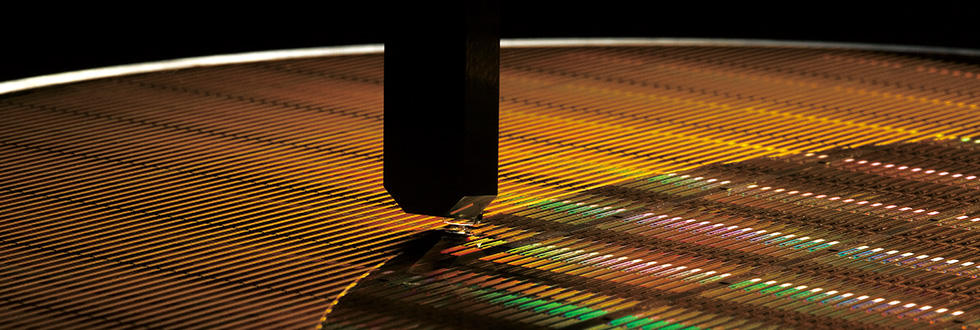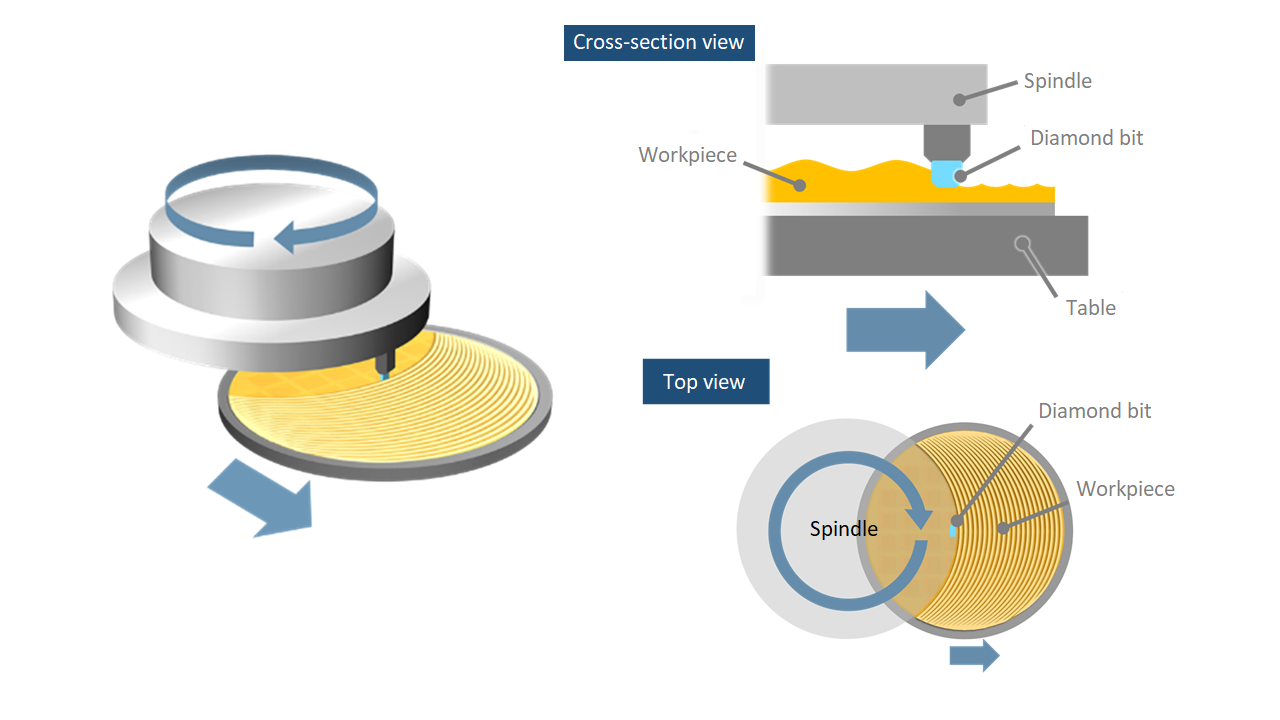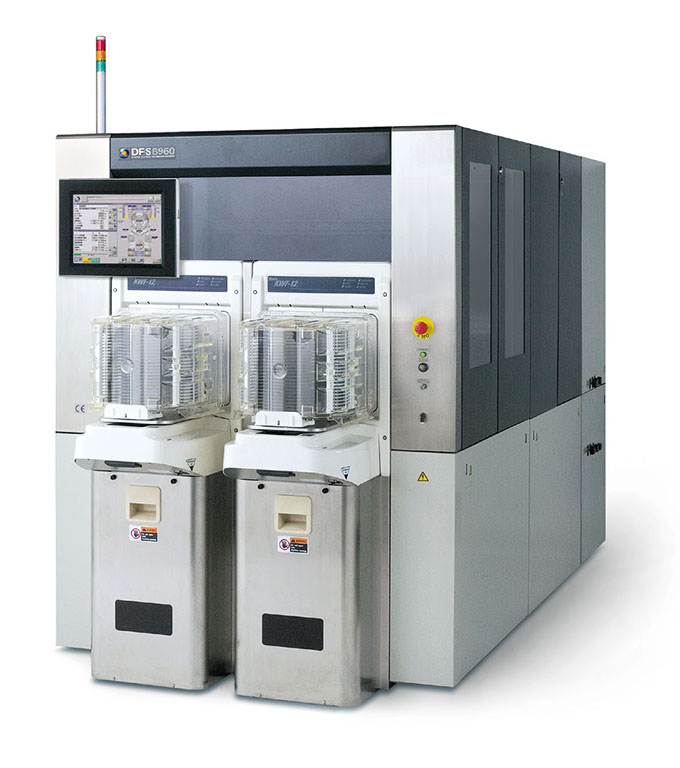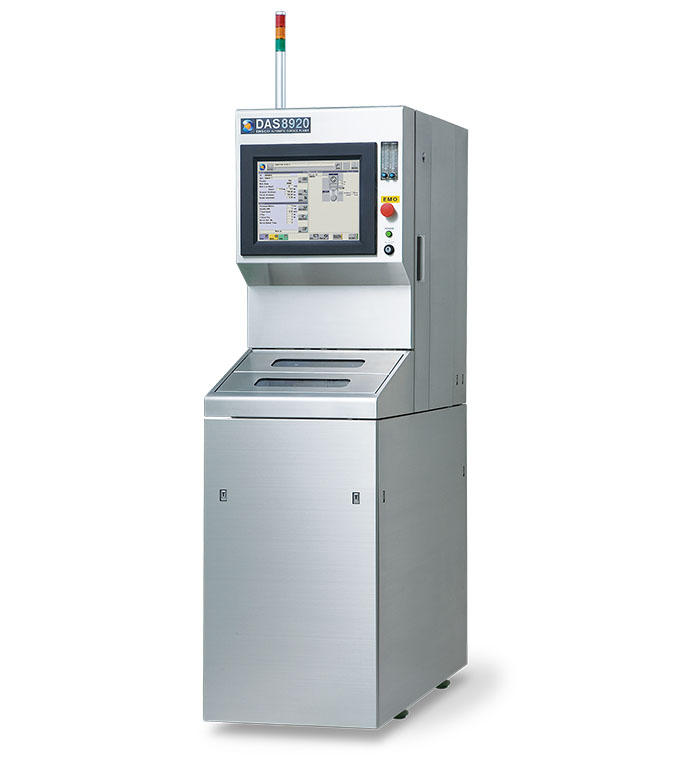
Surface planarization using bit grinding
Process Overview
Surface planarization using bit grinding is the manufacturing process of removing surface topologies of a wafer using a cutting tool with a bit to achieve the desired workpiece thickness or surface roughness.
The cutting bit is placed vertically to the surface and eccentric to the center of the workpiece and rotated at a high speed. The height of the bit is set to a predetermined value; doing so will process the workpiece to the desired thickness. With this method, the surface of a workpiece that is a few millimeters thick can be flattened and trimmed from a few micrometers to several tens of micrometers.

Because the cutting tool should be more than 3 times harder than a regular cutting tool, a diamond bit is used in surface planarization.
During cutting, water (or pure water) is used for cooling and washing away the cutting debris.
Machines used for high-precision machining
Fully-automatic surface planer
A cassette of workpieces is loaded on the machine. The machine automatically loads, processes and cleans the workpiece and returns it to the cassette automatically.
Semi-automatic surface planer
Loading and cleaning of the workpiece is performed by a human operator.
Tools used for high-precision machining
Diamond bit
Target materials of bit grinding planarization
・Ductile materials(gold, copper, solder, etc.)
・Resin(photoresists, polyimide)
・Resin-metal compounds
・Tape substrates
If you require solutions for your processing issues,
please contact DISCO CORPORATION.
-
Please contact DISCO CORPORATION.
Please feel free to contact us through the inquiry form or via phone call.
Inquiries -
Consultation for non-chargeable processing
If you are struggling with any processing issues,
please contact DISCO.Service details -
Easy confirmation in thirty seconds!
Online processing feasibility confirmationJust enter the conditions
Easy processing evaluation









